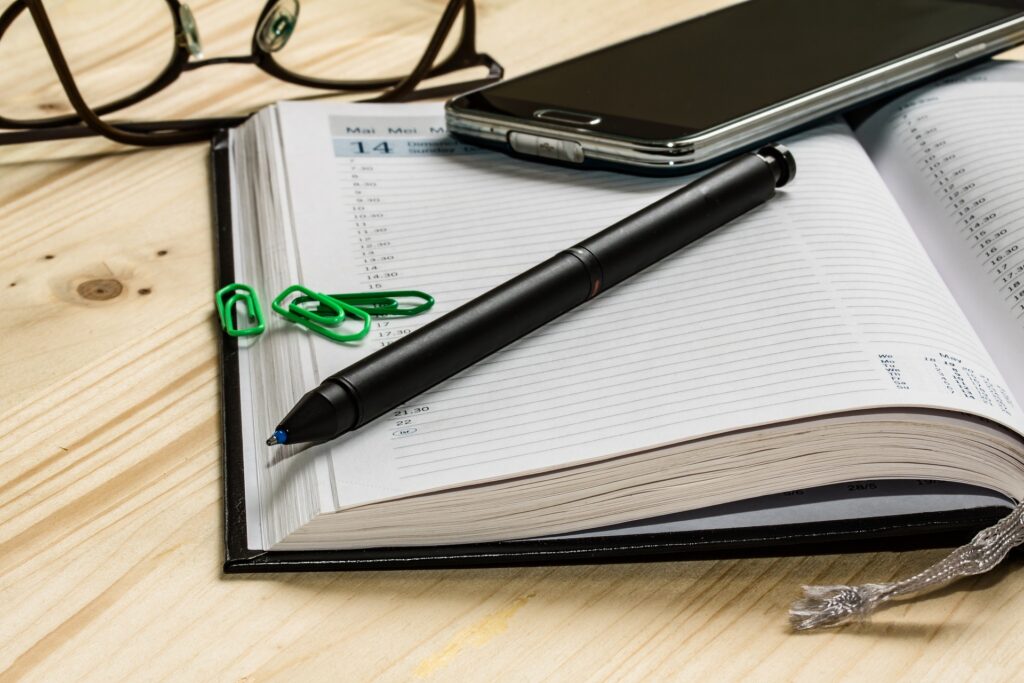We can’t have a conversation about stress eating without talking about identity.
Seemingly unrelated, I know.
But I’ve worked with countless clients who say, “I’m such a bad stress eater.” They don’t say, “I’m someone who stress eats.”
One is an identity.
One is (breakable) habit.
And the sooner you distinguish between the two with your language, the sooner you can work toward breaking the habit. The alternative is continuing to speak a self-fulfilling prophecy into existence—and I know you’re tired of that.
After all, nobody’s ever felt LESS stressed after stress eating. What starts as a mindless coping mechanism always leaves us feeling regretful, discouraged, and MORE stressed than before it happened.
Ironic, isn’t it?
But before we can talk about how to break the habit, we need to talk about what “success” looks like—because it’s not what most people think. You’re not one article, tip, or strategy away from never stress eating again.
What success really is is managing the habit, and having it happen less frequently.
Sound like a plan?
Here’s how you’re going to do it:
Step #1: Audit your environment
Imagine trying to overcome an alcohol dependency with beer in the fridge. How much harder would your journey be?
Environment dictates behavior, and if your cabinets, fridge, and work desk are loaded with highly palatable (easy to overeat) snacks, no stress eating strategy in the world is going to be that helpful.
So before you go any further, you NEED to make it harder (from a logistical perspective) to reach for your “go-to’s”—especially if they’re unhealthy.
(And in my experience, nobody stress eats chicken breasts and rice cakes).

It’s unlikely you’re slamming salads when you’re stressed
This starts with your Physical Environment. Ask yourself, “Am I…”
• Keeping splurges out of the house?
• Keeping splurges out of sight?
• Keeping MY food “separate”*?
• Planning and prepping healthy meals?
*This is important if you live with others and they don’t share your goals.
Next, we have your Social Environment. Again, ask yourself, “Am I assessing…”
• Who I spend time with when stressed?
• Who I talk to when stressed?
• My “typical” behaviors during?
Finally, we have your Digital Environment. One last time, you’ll ask yourself, “Am I…”
• Deleting all my food ordering apps?
• Unfollowing foodie accounts on social?
• Unsubscribed from promotional lists?
If you skip these audits, and don’t overhaul what’s around you, it’s unlikely the next few steps will be effective.
Not sure what to replace splurges with?
Not to worry: I’ve outlined my recommendations in the One-Stop Nutrition Guide:

Just tell me where to send your copy:
Step #2: Identify the primary triggers
While seemingly obvious, many people never take the time look for common triggers (they're unique to each of us). Sure, some stress eating will be "random"—but generally speaking, there WILL be commonalities in what's giving you trouble, like:
✕ A mean boss
✕ Money issues
✕ A rocky romantic relationship
✕ Missed work deadlines
✕ A sick family member
Like any other problem that needs solving, you need to identify a cause before you can strategize a solution.
Step #3: Minimize or reduce exposure
In other words, DO something about your stressors.
And this is where I lose a lot of people.
Similar to being a "stress eater," many people identify as "stressballs," "nervous Nancy's," and "worrywarts"—and if that's how you identify as a human being... you might be out of luck. Because words are powerful.
But I know you're not here to settle. I know you're tired of stress eating, and the feelings of defeat you experience afterwards—so I know you're open to stress management strategies.

Poor time management is the route of many stressors—like missing a work deadline, running late to an event, or "not having time" to work out or cook
In general, many recurring stressors are rooted in (A) poor time management, or (B) an unwillingness to "rip the Band-Aid" and have a difficult conversation, or make a difficult decision.
And by no means am I downplaying your obstacles. There ARE some scenarios where a stressor's existence (ex. mean boss or sick family member) is completely out of your control. But there's almost always something you can do to reduce a stressor. Examples include:
• Setting boundaries with your boss
• Establishing and following a budget
• Putting effort into "dating" your partner
• Setting mini deadlines before a big one
• Educating yourself on an illness
Again, I'm not saying these strategies are magical, or that your stressors aren't valid, but making an effort to take a stressor from an "8" to a "6" is worth it—for mental AND physical health. So get to thinking about how you can be proactive and resilient.
Step #4: Establish a "Pattern Interrupt"
Interestingly enough, I learned of Pattern Interrupts at a business conference, where a social media "influencer" encouraged us to mix up our Instagram stories to keep our audiences engaged. For example, switching locations, filters, and text when filming.
The idea is that the "interrupt" keeps the brain guessing and not zoned out (as opposed to monotonous, repetitive imagery)—and this is surprisingly useful with stress eating, too.
So think about where your stress eating happens.
We're creatures of habit, and stress eating often repeats itself in the car, pantry, or bedroom. Wherever this place is, I need you to establish a Pattern Interrupt and leave a note for your future stressed self.

In my cases, stress eating happens during work—and a Post-it can make you think twice
It can be on a Post-it, dry erase board, or desktop prompt. Frankly, it doesn't matter. It just has to be somewhere that'll catch your attention when you're zoned out and about to mindlessly eat.
I've had clients leave notes saying:
• "Think about tomorrow" on their fridge
• "Take a deep breath" on their desk
• "Pause" on the pantry door
It doesn't have to be lengthy or vulnerable, but it does have to get you to pause and think about "future you": the you that'll regret the decision to stress eat.
IMPORTANT: Like every other step on this list, establishing a Pattern Interrupt isn't magical. But it'll majorly reduce the likelihood of stress eating IF combined with the next step:
Step #5: Have an alternative coping mechanism in place
Once you've successfully been "interrupted" by your note, you NEED to reroute your attention to this preplanned alternative. Examples include:
• FaceTiming a friend
• Going on a walk
• Playing with your pet
• A breathing exercise
• Mindless TV
• Journaling
• A good fiction book
• Getting outside
• Working out
You get the idea.
Stress eating is a learned habit, and you CAN recondition your brain to go another route (with time and practice) if you have an alternative coping mechanism in place.
BONUS: Be ridiculously patient
We'll wrap up with the most commonly ignored wellness tip of all time: being ridiculously patient.
For whatever reason, we treat ourselves like the ultimate failure when we have a human moment and stress eat—but imagine if a friend slipped up.
What would you tell them?
That they're an undisciplined or weak-minded? Or that these things happen and they're one healthy choice away from being back on track?
The latter, obviously—so don't treat yourself with any less grace.
Stress management takes time and practice, which means stress eating isn't going away overnight, either. But a consistent, admirable effort will help you overcome it.
I promise.
———
To recap your action steps:
1) Audit your environment
2) Identify your primary triggers
3) Minimize or reduce exposure
4) Establish a Pattern Interrupt
5) Have an alternative coping mechanism
6) BONUS: Be ridiculously patient
And I can be helpful in any way, please let me know. The primary focuses of my VIP Nutrition Coaching program are:
• Improving your relationship with food
• Learning to stress about food less
• Using a HIGHLY sustainable approach
• Balancing flexibility with progress
You can see how clients have done HERE.





